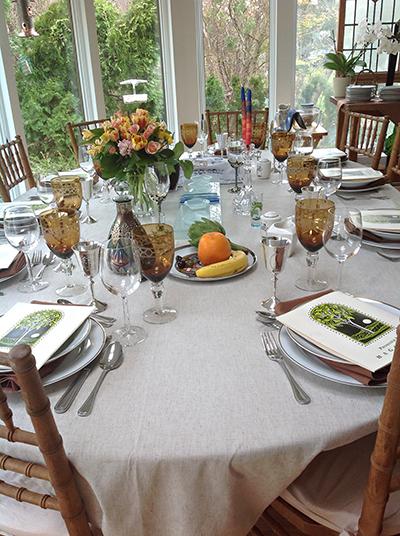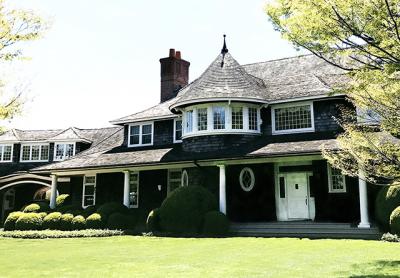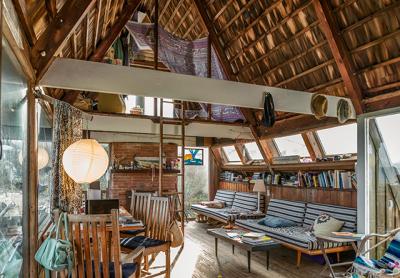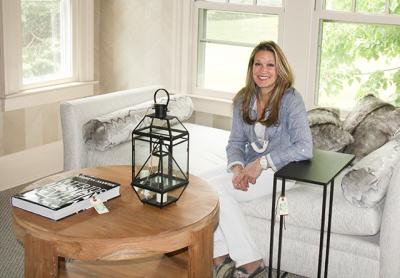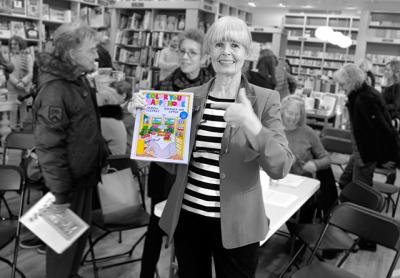Bob Linker: Master Metalsmith
Bob Linker: Master Metalsmith
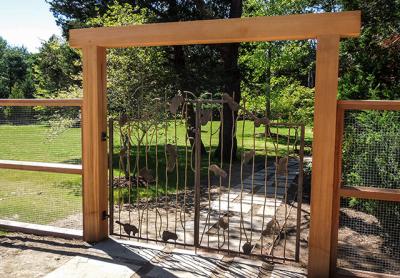
“I am one of the only people in town who can do almost anything,” Bob Linker said the other day. “You bring me your brass, bronze, your grandfather’s knickknack, and I’ll fix it.”
His Jeep, with IRONY2 plates, was parked just outside and he was in a hurry, he told an unexpected visitor, what with a boat owner meeting him in half an hour at the Sag Harbor Yacht Yard to install an iron railing. Mr. Linker, who creates custom metal products for clients from architects and interior designers to people who drop by with the oddest ends — right now he’s restoring a “little copper watering can that most people would throw out” — runs a mom-and-pop business with help only from the mom half, his wife, Elizabeth, who deals with customers and balances the books.
By 1993, when he took a seasonal lease on a potato barn in Water Mill for his first stab at self-employment, Mr. Linker had been working “in automotive” for 20 years, 10 at the old Olympic Heights garage on Three Mile Harbor Road and then 10 more maintaining vintage race cars in Southampton. “I honed a lot of metal skills working on race cars,” he said, “and I enjoyed creating with my new skill.” He opened The Irony, at 53 Sag Harbor Turnpike, three years later, in a building that was originally the freight station at the Long Island Rail Road’s East Hampton terminus, back before the tracks got to Montauk.
Now, his bronze, brass, copper, steel, aluminum, or iron creations are found in houses and commercial establishments all over town: pocket door frames commissioned by John Hummel, a builder of high-end Hamptons houses, front-entrance gate railings made for the Montauk restaurant North by Northwest, davits repaired at the town marina on Three Mile Harbor, an intricate gate on East Hollow Road near Baiting Hollow Road in East Hampton, a table for the Rayner family of West End Road, street gratings in Amagansett, a stainless-steel stair railing for a waterfront estate in Noyac, and many, many more.
That last job was one of Mr. Linker’s favorites. It took weeks, he said. “Every rod was hand-fitted.” In the end, though, “I lost my shirt. It should have been twice as much, but she wouldn’t pay me any more than we agreed on. But it’s one of the jobs I’m proudest of.”
“I like contemporary design, and I like the look of stainless steel,” he said. “That railing was intended to be glass, but everything else there was glass, inside and out, and she changed her mind. It is the centerpiece of the house. You walk in the door and that’s what you see.”
He also enjoyed making the copper sea-monster weathervane that now adorns the roof of the Thomas Moran House in East Hampton: “I didn’t have to do the usual arrows, letters, all that stuff.” That job, like many others, came through Mr. Hummel, whose office is in the same complex as The Irony and who was closely involved with the restoration of the Moran house, a national historic landmark.
Mr. Linker was once called in to an East Hampton estate where an 18-foot-high steel sculpture called “Leaves,” purchased in South America and shipped to Briar Patch Road, had rusted. There, his years of training came in handy. “I put an automotive clear coat on it,” he said. A year later, however, it was showing signs of rust again. He went back a second time, tried something else, “and now it’s okay.”
Another job, which like “Leaves” required scaffolding, involved a 19-foot fireplace in a Northwest spec house built by the real estate broker Evan Kulman of Compass. The metalsmith used acorn nuts, which cover exposed threads and provide a finished appearance, to help fasten its steel-plate sheathing to the concrete block underneath.
“This is not hack work,” he said. “You need to think about it, cut it, and assemble it into a finished product.”
“We have decorated our home with custom furniture and home goods from this company,” one satisfied client wrote on Google. “Fireplace screens, accent tables, light fixtures. . . . Everything is much better quality than what you can purchase from department stores.”
The commissioned work Mr. Linker does for upmarket designers and developers usually comes as the house in question is nearing completion. “And that’s my problem,” he said, shaking his head. “You do all that, and by then your pockets are empty.” He meant the homeowner’s, and, by extension, his own as well. The Linkers and their 14-year-old son live in Northwest Woods, but it sounds like they may be unable to stay in East Hampton much longer. The last few years have been hard.
“In this environment,” he said, as a Mercedes and two BMWs chased each other along Route 114 outside his office window, “employees want $35 an hour. I can’t do it. If you have 12 employees, you can make money, but I can’t do it. We’re swamped all season, then no work at all, all winter. Can’t pay the bills, struggling the entire time. Living on our boat two months now.”
The Linkers have talked about selling The Irony and moving, maybe to Riverhead, where their son will attend Mercy High School in the fall. It might happen, it might not. Right now it’s high summer, and there are all those tables, gates, railings, weathervanes, and fences to make and install.

